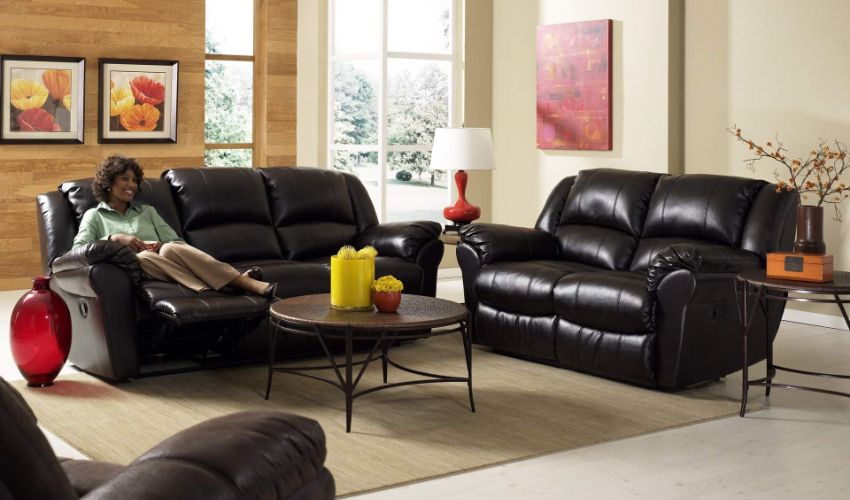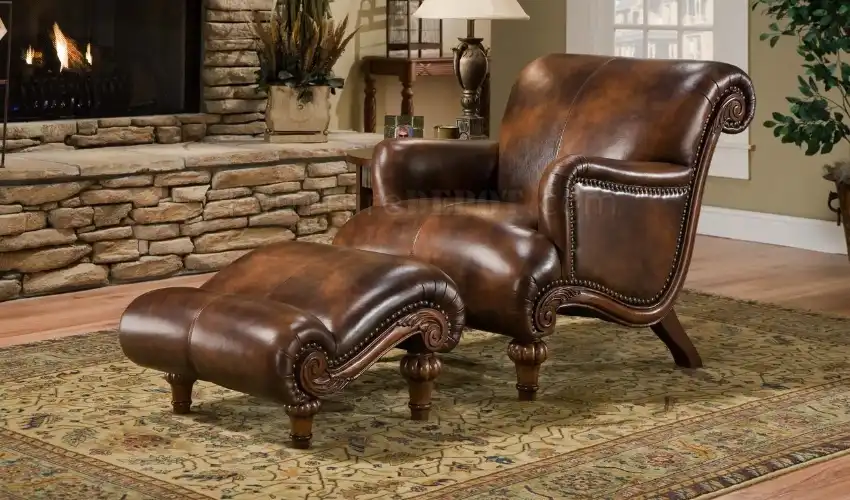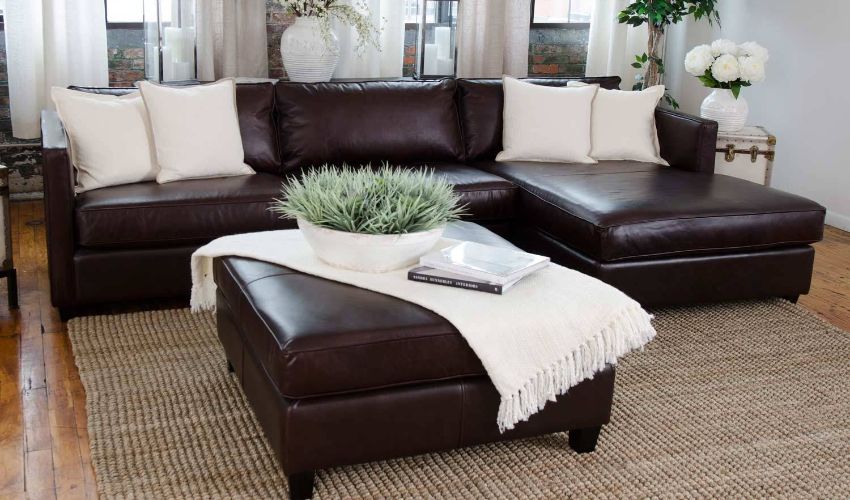Have you ever questioned why certain leather furniture is more expensive than others? This is so because the quality of the grain and the method used to prepare the leather determines its price. Despite the similarity in appearance between the two pieces of leather furniture, this very factor may cause their pricing to range significantly.
The majority of homeowners prefer to purchase leather sofas and chairs because they are sturdy and comfy in addition to fitting the concept of their home or adding aesthetic appeal to their decor. Investing in high-quality materials is similar to doing so since, with proper care, they can endure decades in your home. Before you buy the leather you should keep these things in mind.
- Leather is durable on one side and on the other side is vice-versa. So consult the market properly before buying leather furniture.
- Leather should be chosen according to your space and theme.
- There are a variety of styles in leather so go for which best suits you.
- Always try to use leather which is comfortable while using.
What Makes Leather So Good for Furniture?

The leather undergoes distinctive manufacturing and coloring procedures before being utilized for furniture and other objects in homes.
High-quality leather does not release harmful fumes, rip at the seams, or deteriorate with time. Additionally, it is easy to peel, break, and burn. Additionally, each piece of leather is distinct, similar to a fingerprint. Natural materials include unique features like wrinkles, grains, and scars that give them personality.
Most Commonly Used Types of Leather For Furniture
The natural process of tanning animal hides produces leather and our home decor store in Dubai provides the best leather furniture. Although bovine leather continues to be the most often utilized and affordable source, kangaroo, zebra, goat, and sheep leather are also used. Nearly every kind of animal skin can be converted into leather.
It is impossible to create duplicates, just like a fingerprint. The allure of leather is found in the history preserved in the hide and the patina that develops over time as the leather reacts to its surroundings. Smooth leather with surface treatment for protection.
1. Features of Leather with Semi-Gloss and Smooth Surface

Semi-gloss, smooth leather with a surface color is the leather most frequently used for furniture. Given that they are not too heavy, wear indicators may be simply adjusted and the leather is simple to clean and maintain.
The thickness of the color layer can change. This feels warmer and softer than leather with heavy color layers, yet being a little more sensitive. Layers of color are thick on car leather. Given that leather is used more frequently in furniture,
The leather’s grain texture is primarily natural at higher pricing points. The leather is nearly often sanded and embossed in the lower price ranges. This reduces waste because inferior skins can be treated because bug, disease, or injury-related damage is better concealed by embossing.
2. Greased, Waxed, Oiled, or Vintage Leather

The normal variety of leather types used by furniture producers nowadays includes vintage leather. These kinds of leather tarnish more quickly than other kinds of leather. Stretching, scratching, and friction cause wear markings to become visible on the surface, which is polished with oils and fats to make it smooth. These characteristics of old leather are all present.
It is impossible to create duplicates, just like a fingerprint. The allure of leather is found in the history preserved in the hide and the patina that develops over time as the leather reacts to its surroundings. A suitable care product can frequently smooth off worn indicators.
- Vegetable-tanned leather’s acceptance has rapidly decreased in recent years, with chromium leathers made in the East controlling 80% of the market.
- Vegetable tanning is more expensive and takes a lot longer than chromium tanning.
- Vegetable tanning cannot produce leather that is white or light in hue. To generate light-colored leather, the tanned leather may be given a white finish; however, the thick finish will hide the leather’s original grain.
- Vegetable-tanned leather requires a lot of upkeep. Vegetable-tanned leather can shrink, stiffen, and become brittle if ignored or handled incorrectly. The upholstery may develop cracks, destroying the appearance.
- Vegetable-tanned leather darkens and warms in the presence of light, which isn’t always a good thing.
Many craftsmen and discerning clients still like vegetable-tanned leather over chromium leather despite its disadvantages.
3. Feature of Leather with Nubuck and Suede
Although suede and nubuck leather both have velveteen-like appearances, there are significant differences between the two in terms of their cost, level of durability, and production techniques.
Unlike suede, which has its top grain softly sanded from the inside, nubuck has its top grain lightly sanded from the outside.
Nubuck is significantly more expensive than suede due to the difficulties involved in sanding the top grain from the outside. However, compared to suede, this method preserves more of the leather’s inherent grain and patina.
4. Leather with the Finest Grain

Cowhide is typically used to make leather. They must be carefully cut into thinner layers for processing though, as they are quite thick. All other layers, however, are referred to as split grains.
Before top-grain leather can be utilized as upholstery material, it must be buffed and polished. Nevertheless, after going through various processes, it is still among the purest kinds of leather you can purchase. It is flexible, durable, and ideal for both classic and modern decor. Nevertheless, the price is also the highest.
5. Features of Grain Leather
The cowhide’s top layer is removed, the surface hair is scraped off, and the material is then dipped in a natural dye. The material is neither polished nor buff, so it keeps its natural texture, making it the most real leather product on the market.
Full-grain leather is also highly expensive and hard to come by. Although it initially seems a touch harsh, the material gradually softens. Top-grain leather must first be rubbed and polished from full-grain leather.
6. Feature of Fixed Grain Leather
 Although the faults, scars, and other surface blemishes are completely hidden, the grain pattern seems genuine.
Although the faults, scars, and other surface blemishes are completely hidden, the grain pattern seems genuine.
Genuine leather scraps and various bonding substances are used to create mixed or bonded leather. It is a synthetic composite material that only contains 15 to 17 percent leather, yet it nonetheless has the same appearance, texture, and scent as genuine leather. To give the materials the look of genuine leather, they are backed onto fabric sheets and covered with a thin texture layer.
7. Feature of Subtle Leather

Faux leather, commonly referred to as fake or artificial leather, is a synthetic substitute for real leather. It looks quite lifelike despite not using any animal hides. Faux leather of high quality doesn’t peel or split either. Additionally, it is non-porous, incredibly enduring, and easy to clean. It might not be as comfortable or breathable as the real fabric, though.
The cost of the leather furniture must be taken into account when buying. There is no getting around the price of genuine leather goods. A subtle leather option can be a good substitute for people who prefer the appearance of leather but are on a tight budget.
Leatherette or faux leather, bonded leather, cactus leather, and mushroom leather are examples of synthetic leather. Even though they are marketed as genuine leather substitutes, these leathers fall short of the real thing.
These synthetic leathers fundamentally differ from real leather in terms of scent, feel, and behavior. In addition, over time, synthetic leather frequently peels and cracks.
Furniture wrapped with synthetic leather may be simpler to clean than genuine leather, but it will not retain its worth as well.
Conclusion
The notion of selecting new leather-upholstered furniture is one that can initially seem overwhelming. You could quickly feel overwhelmed by the number of choices. You could quickly feel overwhelmed by the myriad of choices and unfamiliar lingo.
To make things easier, list all the requirements that are significant to you and your family for leather furniture. There are only two types of leather produced by the tanning process: chromium- and vegetable-tanned leather. Three finishes and seven different types of leather are available. Visit a few furniture stores if necessary to see the various effects of the finished goods.
Carpenter Centre offers premium carpentry services in Dubai, UAE, specializing in delivering top-notch furniture solutions and innovative ideas to our valued clients. Our team of skilled experts is dedicated to bringing your envisioned furniture designs to life.





